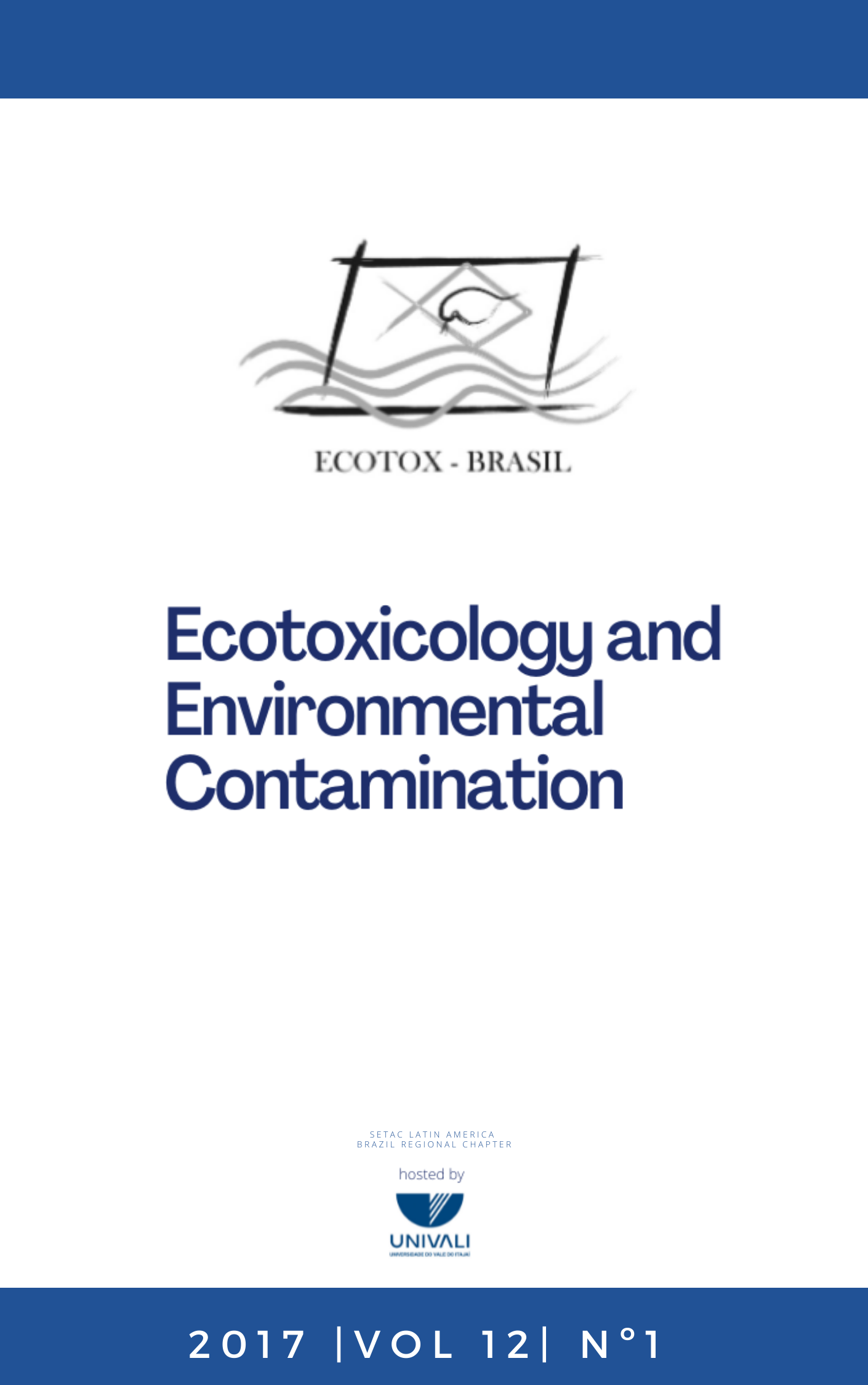Balance disturbance of aquatic microbial microcosm as a method to evaluate the contamination by toxic substances
DOI:
https://doi.org/10.5132/eec.2017.01.03Abstract
Toxicity tests are useful to assess relative toxicities of chemicals in the aquatic environment. Although, they have the advantages of standardized protocols, the test organisms are isolated from the context of the natural conditions. This experimental research challenges the development of an aquatic microbial microcosm with an ecological structure, to evaluate the effects of contamination by toxic substances in the aquatic environment. Two morphological groups were observed in typical ecological succession, according to the modification of the medium. The laboratorial set-up consisted of keeping an organic substrate of 350 mg L-1 of BOD, placed in glass containers maintained in continuous aeration. Growth of filamentous bacteria was observed after 24h, followed by significant exponential growth of free swimming ciliates protozoa, reaching its maximum rate on the 4th day. Disturbances were caused by the introduction of copper sulphate and insecticide dichlorvos. Complete inhibitory effect of growth was observed to ciliates at concentrations of 12.28 mg L-1 Cu and 500 mg L-1 DDVP-20. Easy to be assembled, the method suggested information about theoretical aspects of self-organization. To greater precision, we mention the study of ecological interactions, opened system development, biodiversity molecular approach and application of ecological models.
Downloads
Downloads
Published
How to Cite
Issue
Section
License
Copyright © 2006 ECOTOX-Brasil
Copyright notice: It is a condition for publication that manuscripts submitted to this journal have not yet been published and will not be simultaneously submitted or published elsewhere. By submitting a manuscript, the authors agree that copyright for their article is transferred to the Sociedade Brasileira de Ecotoxicologia (ECOTOX-Brasil) if and when the article is accepted for publication. The copyright covers the exclusive rights to reproduce and distribute articles, including reprints, photographic reproductions or any other reproduction of a similar nature, including translations. No part of this publication may be reproduced, stored in a retrieval system or transmitted in any form or by any means, electronic, mechanical, photocopying, recording or otherwise, without permission of the publisher.
Notice: While every effort is made by the EEC, editors and editorial board to see that no inaccurate or misleading data, opinions or statements appear in this journal, they wish to make it clear that the contents of the articles and advertisements published herein are the sole responsibility of the contributors or advertisers concerned. Accordingly, the EEC, the editorial board and editors and their respective employees, officers and agents accept no responsibility or liability whatsoever for the consequences of any inaccurate or misleading data, opinion or statement.




